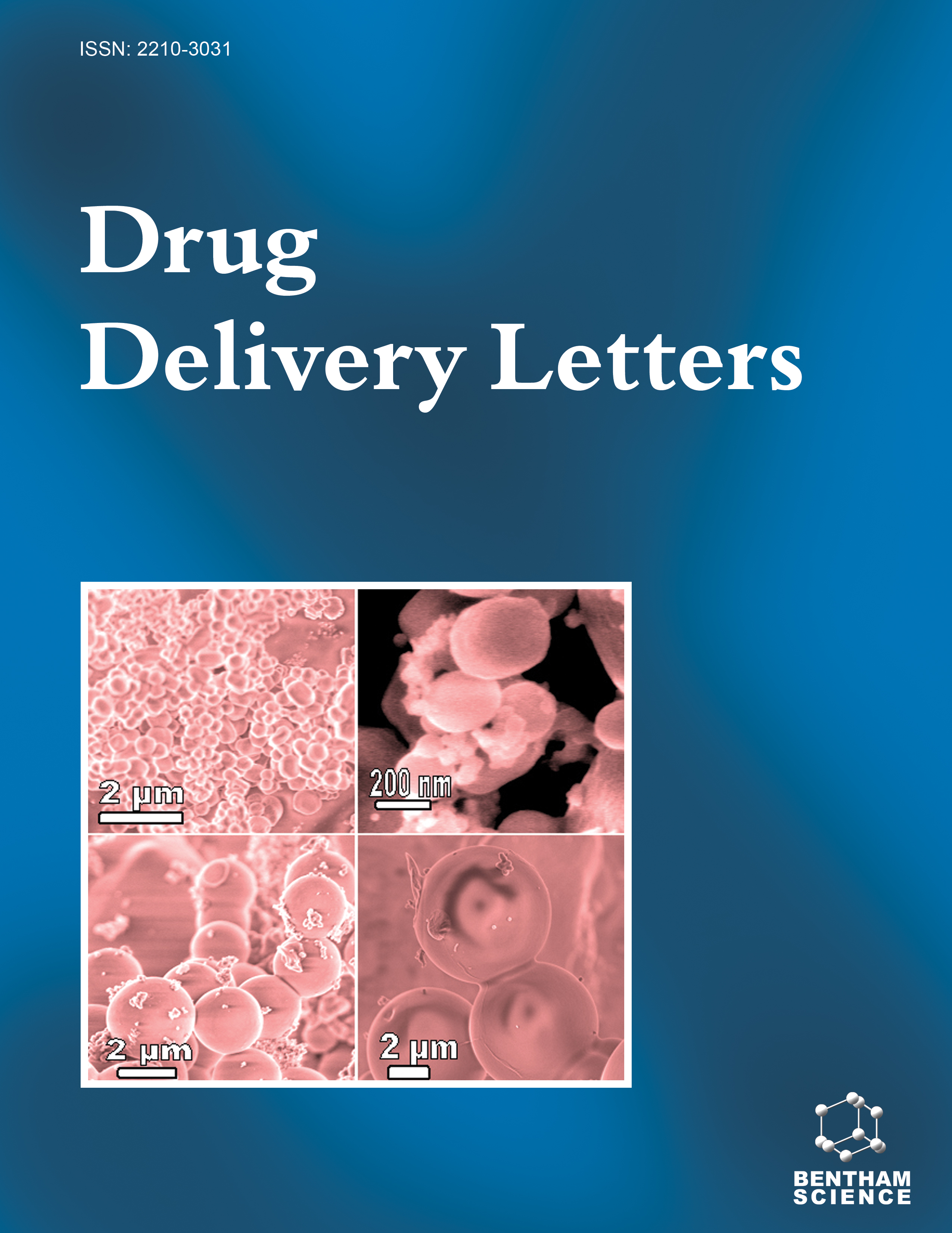- Home
- A-Z Publications
- Drug Delivery Letters
- Previous Issues
- Volume 12, Issue 1, 2022
Drug Delivery Letters - Volume 12, Issue 1, 2022
Volume 12, Issue 1, 2022
-
-
Transungual Drug Delivery System for the Topical Treatment of Onychomycosis: A Review
More LessOnychomycosis is an infection caused by a fungus that causes discoloration and thickening of the nail layer, and it is the most common nail infection in the world. Trichophyton rubrum and Trichophyton mentagrophytes var. interdigital is the most common anthropophilic dermatophytes that trigger it. Onychomycosis is caused by yeasts such as Candida albicans and Candida parapsilosis, as well as moulds such as Aspergil Read More
-
-
-
A Review on Polymeric Invasive and Non-Invasive Nanocarriers Assisted Transdermal Drug Delivery for Improved Penetration and Bioavailability
More LessAuthors: Aditya Sharma, Navneet Verma, Shashank Chaturvedi, Neelkant Prasad and Vaibhav RastogiBackground: Despite the vast utility of polymeric nanocarriers in drug delivery, their promising role in formulating efficient transdermal drug delivery systems for managing various diseases has not been explored properly. Introduction: Polymeric nanocarriers have increased the interest of researchers with respect to improving intradermal and transdermal delivery of drugs having ominous penetration and solubility issues. T Read More
-
-
-
Electroporation: An Effective Method For In Vivo Gene Delivery
More LessAuthors: Arash Nikyar and Azam BolhassaniBackground: Gene therapy is a promising approach for the treatment of various diseases, including cancer, hereditary disorders, and some viral infections. The development of efficient and safe gene delivery systems is essential for facilitating gene transfer to various organs and tissues in vivo. Objective: In this review, we briefly describe the principal mechanisms of gene delivery systems, particularly electroporation, and d Read More
-
-
-
Medicated Supportive Braces: A Synergy of Treatments for Joint Pain Relief
More LessAuthors: Dixita Limbasiya and Dharmik MehtaBackground and Objectives: The present study unveils a simple but innovative combination of existing treatments of three different domains with unique logical aspects. Joint pain is the major cause of disability, especially for older adults. Currently, two widely practiced treatment options are combined to produce simultaneous treatments that overcome the drawbacks of individual treatment and improve patient compliance. Read More
-
-
-
Molecular Docking and Pharmacokinetic Studies of Aquillochin and Grewin as SARS-CoV-2 Mpro Inhibitors
More LessBy Adnan CetinBackground: The COVID-19 pandemic emerged at the end of 2019 in China and spread rapidly all over the world. Scientists strive to find virus-specific antivirals against COVID-19 disease. This study aimed to assess bioactive coumarinolignans (Aquillochin, Grewin) as potential SARS-CoV-2 main protease (SARS-CoV-2 Mpro) inhibitors using a molecular docking study. Methods: The detailed interactions between coumarinolign Read More
-
-
-
The Application of the Box-Behnken Design Response Surface Methodology to Study Optimized Formulation Variables on the Drug Release Pattern of Benidipine Hydrochloride Extended-release Matrix Tablet
More LessAuthors: Amaresh Prusty, Bijon K. Gupta and Amiyakanta MishraBackground: In this research study, an attempt has been made using Box-Behnken design (BBD) Response Surface Methodology to find optimized formulation variables at 3 levels (low, medium, and high) to affect the dependent response, which is the % drug release pattern at different time intervals in extending drug release of Benidipine Hydrochloride(BH) matrix tablets. BH extended-release tablets reduce the side effects Read More
-
-
-
Preparation and Characterization of Stattic-Loaded Albumin Nanoparticles for Antimetastatic Cancer Treatment
More LessAuthors: Yee C. Kwa, Theebaa Anasamy, Yiing Yee Foo, Bey Fen Leo, Ivy Chung, Lik Voon Kiew and Lip Yong ChungBackground: Stattic offers a unique inhibitory effect on the STAT3 signaling pathway, a crucial mechanism in the progression of metastatic cancer. However, the development of Stattic has been impeded by its hydrophobicity and lack of specificity. To overcome these limitations, encapsulation of Stattic with polymeric micelles was previously attempted, which led to a significant increase in the potency of Stattic on breast cancer c Read More
-
Volumes & issues
Most Read This Month
Article
content/journals/ddl
Journal
10
5
false
en


